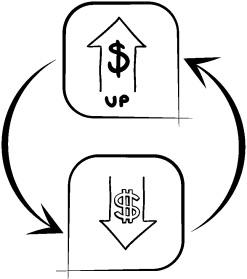Memory Aid Guidelines
Memory aids provide students with an equal opportunity to demonstrate their competence, knowledge, and understanding of course content. They are approved only for those students who have a well-documented functional limitation related to memory. It is essential to consider whether or not you are evaluating your students’ ability to memorize or apply the material.
A memory aid is a resource that is used during test-taking. It is designed by and for the student to support the recall of information that has already been learned.
Its main purpose is to allow a student to access their learning. A Memory Aid does not replace the need to study or the mastery of a course learning outcome.
Memory Aid Guidelines
An overview of the content, layout and submission requirements for using memory aids as an academic accommodation.
What is permitted on a Memory Aid?
- Content Requirements: Cues, or personal hints to help trigger the understanding of information that you have already learned. These are also known as mnemonic devices. Mnemonic devices are not a complete answer but represent the information you need support in remembering. They can come in the following forms: key terms, personalized phrases, diagrams, tables, and category headings, list of steps in a procedure, formulae, acronyms, and acrostics. Mnemonic devices are very individualized and will vary from student to student. To review some examples, please see our Sample Memory Aid Content below.
- Formatting Requirements: One 8 ½ x 11 document (hard copy or electronic document), Double-sided, Double-spaced and Minimum of 12-point font or handwritten equivalent. Audio equivalents are also permitted.
What is not permitted on a memory aid?
- Complete answers
- Full course notes
- Word-for-word choices
Who is responsible for creating the memory aid?
The final draft of the memory aid is a collaboration between the student and the instructor.
Student responsibilities:
- To learn the course material
- To decide on what cues/mnemonic devices are needed to support the recall of information
- To create the Memory Aid content
- To make any necessary revisions, as advised by the instructor, if the first draft provides a complete answer
*Students are to submit their Memory Aid to their instructor for approval, one week before the test/exam date.
Instructor responsibilities:
- To inform the student if Memory Aid content compromises academic integrity
- To provide the student with feedback in a timely manner that provides time for revision
- To submit the Memory Aid to the Test Centre, attached to the exam materials
ADDITIONAL WAYS TO SUPPORT YOUR STUDENTS:
- Leave a trail. When you start a new teaching unit, announce to the class and on Blackboard the areas that you intend to test. Students with memory aids can create and use their memory aid as the course progresses, rather than just before the test.
- For the few students who may require memory aids, it helps to confidentially remind them to submit their memory aid to you at least 1 week before the test, so that you can review it and provide direction in person or by email on the acceptability of the content.
- Consider allowing students to demonstrate their knowledge and skills in ways other than traditional tests/exams which by their design often constrain students with disabilities.
Memory Aid Submission and Approval Process for Students:
What You Need to Know, in 5 Steps
- Plan Ahead.
- Review your course outlines in advance. Make note of your test dates.
- Look over your course materials to determine if you will need to use a Memory Aid for the next, upcoming test.
- Communicate.
- Notify your instructor in *advance and discuss the possibility of using a Memory Aid for the test.
- Once this has been determined, familiarize yourself with the learning outcomes of the test. Discuss with your instructor what type of content would be permitted on the memory aid.
*Note: advance notice also allows your instructor time to review your Memory Aid draft and provide feedback.
- Create.
- Study your course materials.
- Create cues for the information you will need help remembering during the test.
- Compile your content into your final document. Ensure that it follows the Memory Aid Guidelines.
- Submit.
- Submit the Memory Aid to your instructor for review, one week before the test date.
At this stage, your instructor may either:
- Approve of your Memory Aid and deliver it, along with your test, to the Test Centre.
- Return the Memory Aid to you with suggestions and feedback for revision.
- Attend.
- Attend your test/exam, as scheduled. Your Memory Aid will be administered with your test/exam materials.
- Please note that once a Memory Aid is submitted, students are not able to bring in additional notes or a revised Memory Aid to the test.
Sample Memory Aid Content
The type of mnemonic devices used on a memory aid varies from student to student. Below you will find sample content that can be typically found on a memory aid. Memory aid content may represent learned information through some of the following ways:
Personalized Phrases
Example 1: To remember the meaning of the philosophy of “Hedonism, (to maximize pleasure and minimize pain):
“H = 100% Yay; 0% Ouch”
Example 2: To remember Maslow’s Hierarchy Needs –physiological, social and the “I”, representing personal:
“P.S. I Love You”
Images
Example 3: To remember the characteristics of an economic recession:

Example 4: To remember the meaning of “cluster sampling data” as a form of research:

Short Form Words
Example 5: To remember a group of related terms, such as Behaviourism, System Theory and Conflict Theory
Bhvrsm., Sys.Th., Con.Th., etc.
Lists (including stages and steps)
Example 6: To remember the order of steps in the Scientific method:
- Survey
- Observe and
- Experiment
Acronyms
Example 7: To remember the anatomy of the human scalp: Skin, sub-Cutaneous Tissue, Aponeurotic, Loose Skin and Periosteum
S.C.A.L.P.
Example 8: To remember the term “Anti-Oppressive Practice”:
A.O.P
Formulae
Example 9: To remember the variables of a mathematical formula:
y = MX + b
L= |4p|
Key Terms
Example 10: To remember a group of related terms to elaborate on for an Environmental Science essay test:
Carbon Footprint
Carbon Neutral
Paris
Greenhouse Gases
Layout Possibilities
Mnemonic devices can also be organized using category headings, tables, and various diagrams. These could be used to group commonly related mnemonic devices or to help remember the relationship between them.
Brassell, Danny. (2017, January 23). "A Simple Way to Remember Maslow's Social Hierarchy of Needs." Retrieved from: https://www.linkedin.com/pulse/simple-way-remember-maslows-social-hierar....

